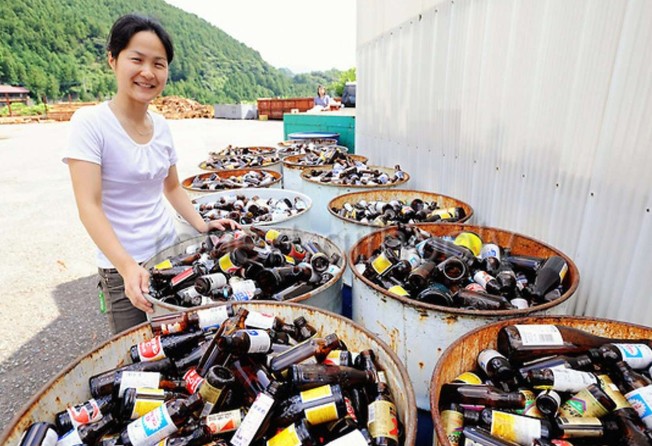Japan’s ‘zero waste town’ is so good at recycling that it is attracting foreign visitors
Residents of Kamikatsu diligently sort their waste into 45 different categories so it can be recycled, reused or composted

A small town in western Japan has become so good at recycling that it has been attracting foreign visitors, after its efforts became widely known via YouTube.
The documentary video, titled How This Town Produces No Trash with English narration and captions, explains how the 2,000 or so residents of town of Kamikatsu in Tokushima Prefecture diligently sort and recycle their waste according to 34 designated categories, peeling off labels and removing bottle caps as they go. Since the video was produced in late 2015, the categories have been increased to 45.
There is also a city-wide composting system for organic waste. Unwanted working items are swapped and given away for free at a special shop.
The five-minute video has been viewed about 540,000 times since it was posted on YouTube by Seeker Stories. The idyllic hillside town has since received delegations from municipalities and environmental organisations from at least 10 countries.
I will be happy if the Kamikatsu model spreads around the world
Hor Heang, a 22-year-old student at Cambodia’s Royal University of Law and Economics who visited the town in December, said: “We must follow this lead as the waste problem in Cambodia has grown serious with its economic development.”
The town announced in 2003 that by 2020 it will stop generating waste altogether, as its “zero waste” goal. It currently recycles or reuses nearly 80 per cent of its non-organic waste, much higher than the national Japanese average of about 20 per cent, according to the town.
At Hibigaya waste station, Kamikatsu’s sole waste collection spot, dozens of baskets are in place for collecting steel cans, aluminium cans, brown glass bottles, plastic caps and paper packages among other trash categories items.
The station also hosts a shop where the town’s residents can drop off items they no longer use and take home anything they want for free.
“I will be happy if the Kamikatsu model spreads around the world,” said Akira Sakano, 28, who heads the nonprofit organisation Zero Waste Academy that operates the waste collection site.
“We hope to work toward achieving the town’s goal and spreading the movement to other areas at the same time,” she said.